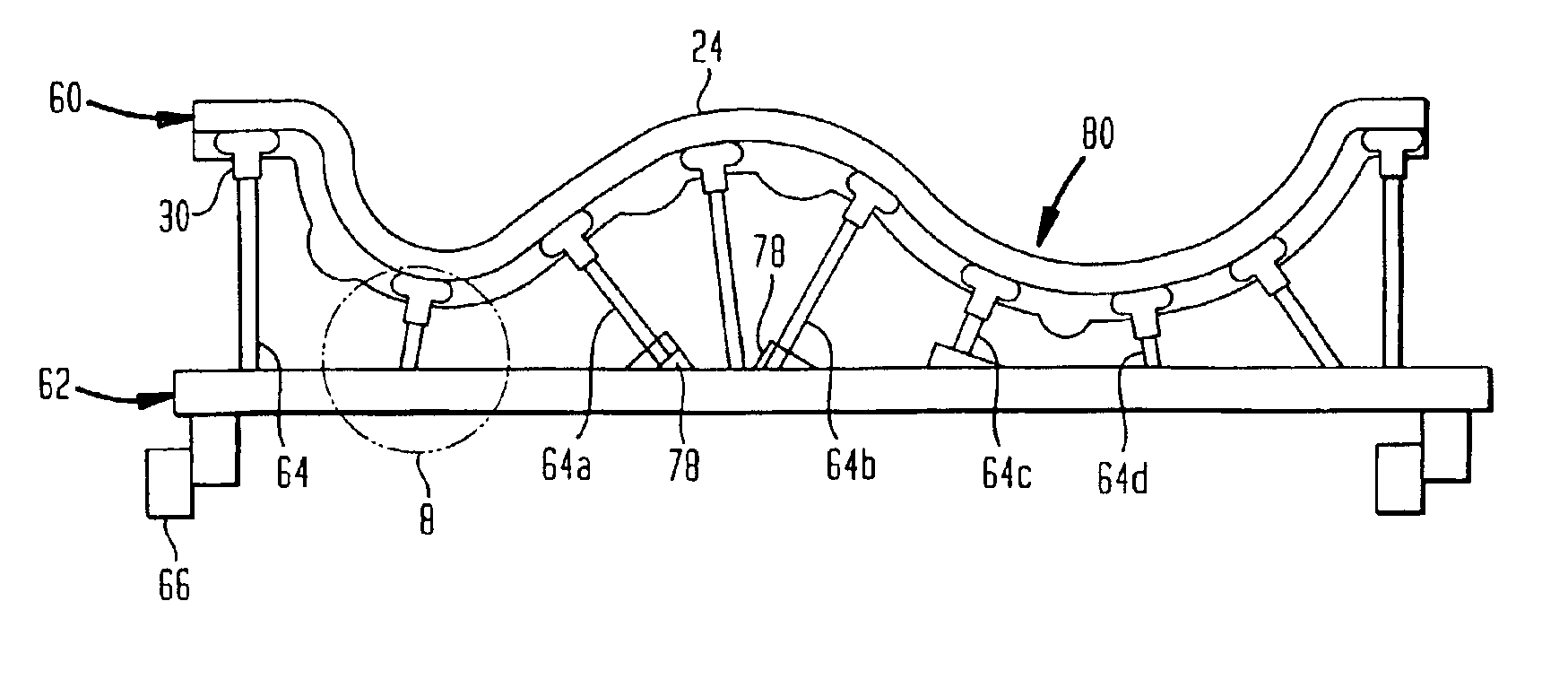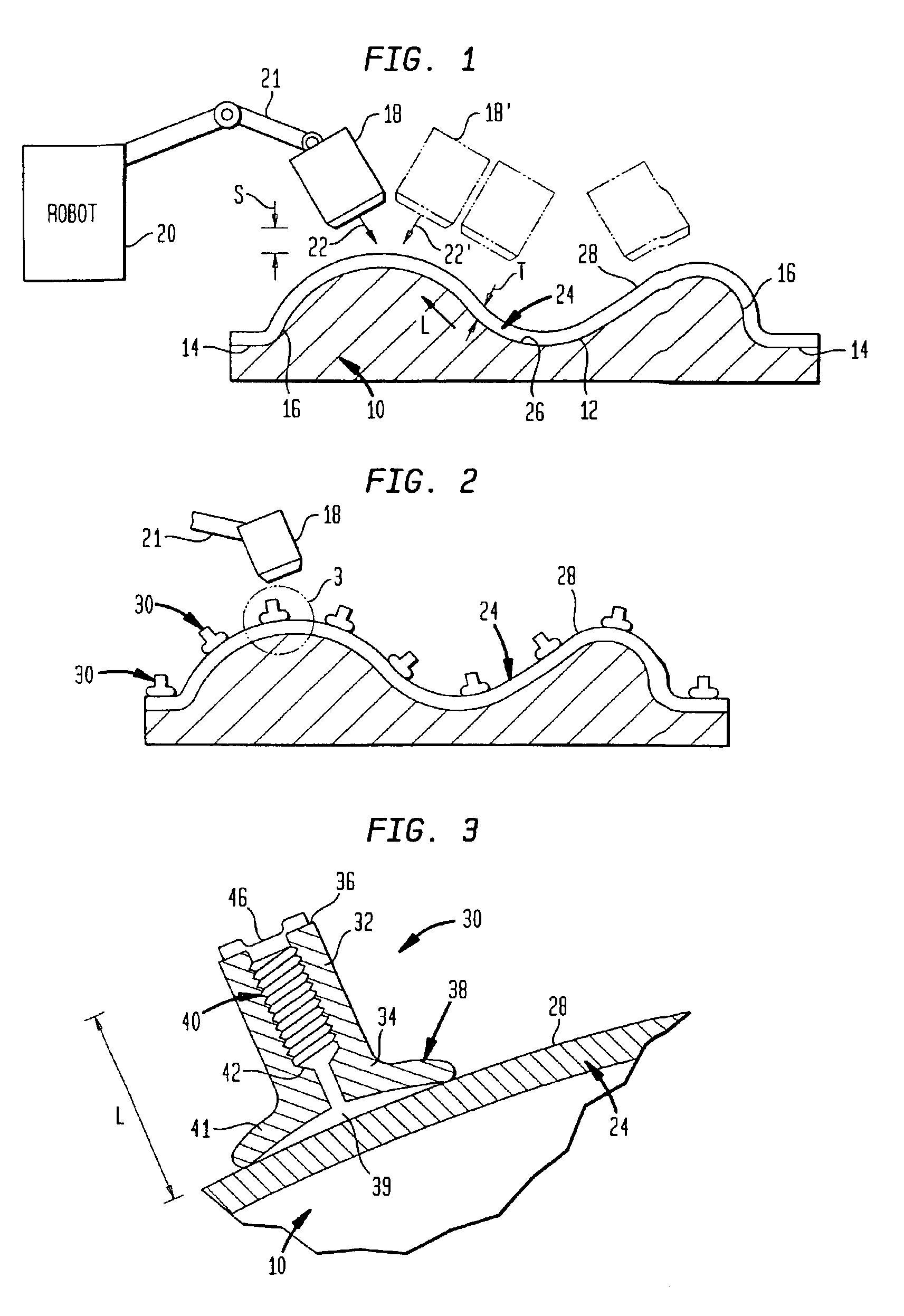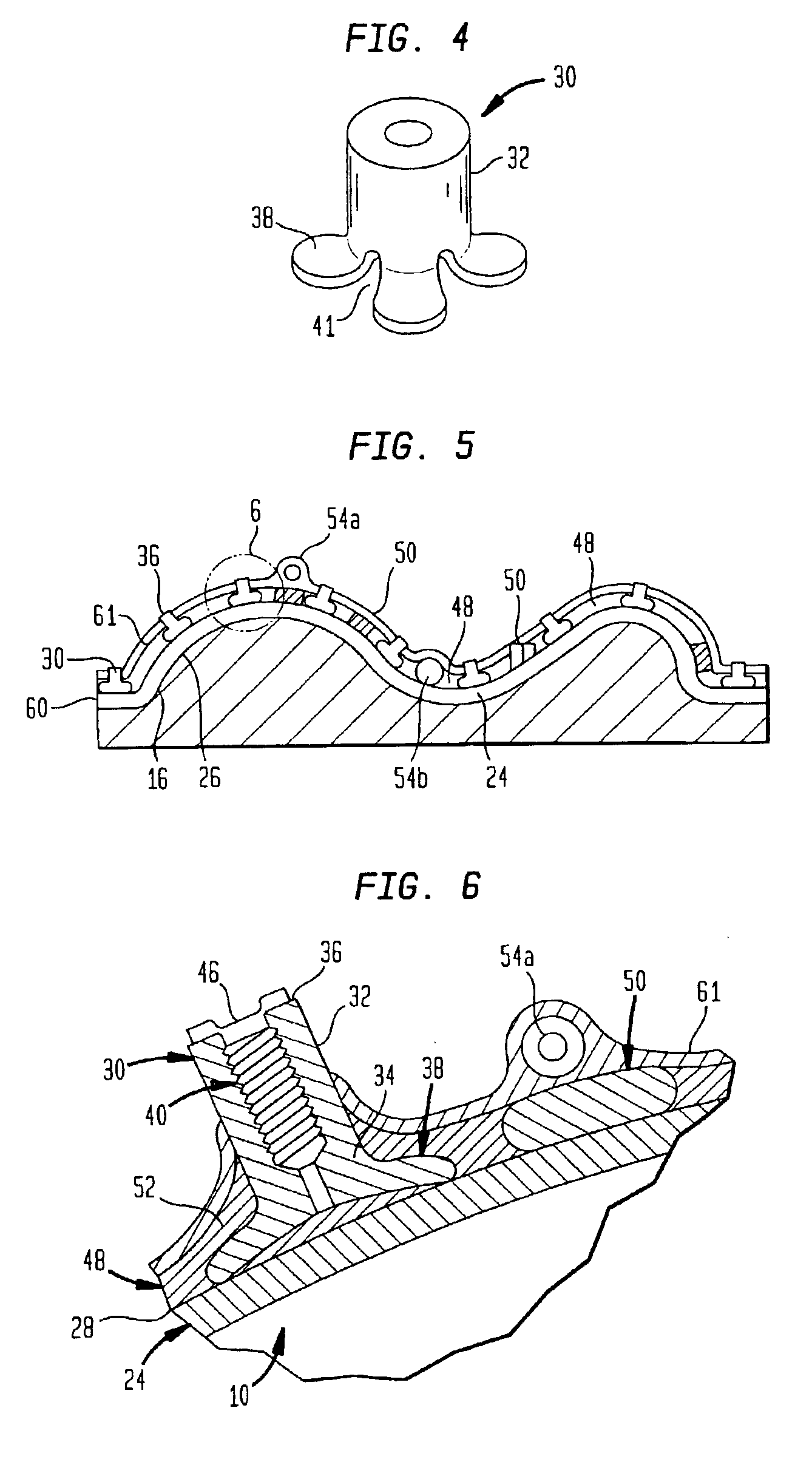Thermal-sprayed tooling
a tooling and spraying technology, applied in the field of tools, can solve the problems of inability to manufacture very large molds, inability to meet the requirements of large molds, and inability to meet the requirements of large molds, and achieve the effects of simple techniques, improved heat transfer, and economic manufacturing
- Summary
- Abstract
- Description
- Claims
- Application Information
AI Technical Summary
Benefits of technology
Problems solved by technology
Method used
Image
Examples
Embodiment Construction
A process in accordance with one embodiment of the invention uses a matrix 10 having an active surface 12 with a shape corresponding to the shape of the part to be molded. As described in greater detail in the '267 patent, the matrix desirably also includes edge regions 14 projecting outwardly from the active surface and side walls 16 extending between the edge regions and active surface 12. The matrix 10 can be formed from essentially from any material having useful structural strength at the temperatures attained by the matrix during application of the sprayed metal, typically on the order of 220° F. (104° C.). The matrix can be formed by any conventional process. For example, high-temperature epoxy composite tooling compounds can be cast to shape using a master tool (not shown). Readily machinable materials such as polymeric materials, metals such as aluminum or brass and graphite may be machined to shape using conventional methods such as numerically controlled machining methods...
PUM
| Property | Measurement | Unit |
|---|---|---|
| area | aaaaa | aaaaa |
| temperatures | aaaaa | aaaaa |
| standoff distance | aaaaa | aaaaa |
Abstract
Description
Claims
Application Information
 Login to View More
Login to View More - R&D
- Intellectual Property
- Life Sciences
- Materials
- Tech Scout
- Unparalleled Data Quality
- Higher Quality Content
- 60% Fewer Hallucinations
Browse by: Latest US Patents, China's latest patents, Technical Efficacy Thesaurus, Application Domain, Technology Topic, Popular Technical Reports.
© 2025 PatSnap. All rights reserved.Legal|Privacy policy|Modern Slavery Act Transparency Statement|Sitemap|About US| Contact US: help@patsnap.com



